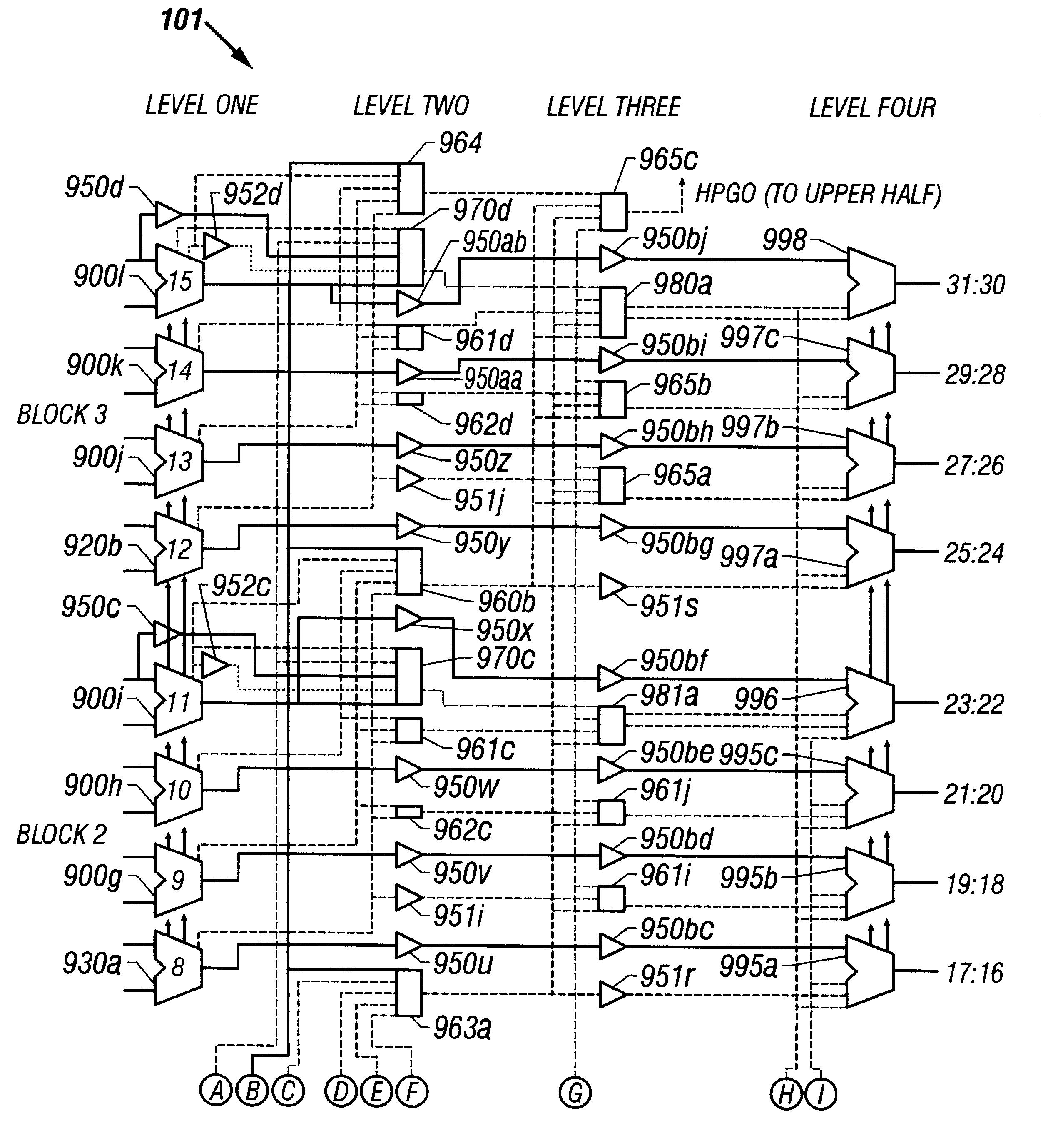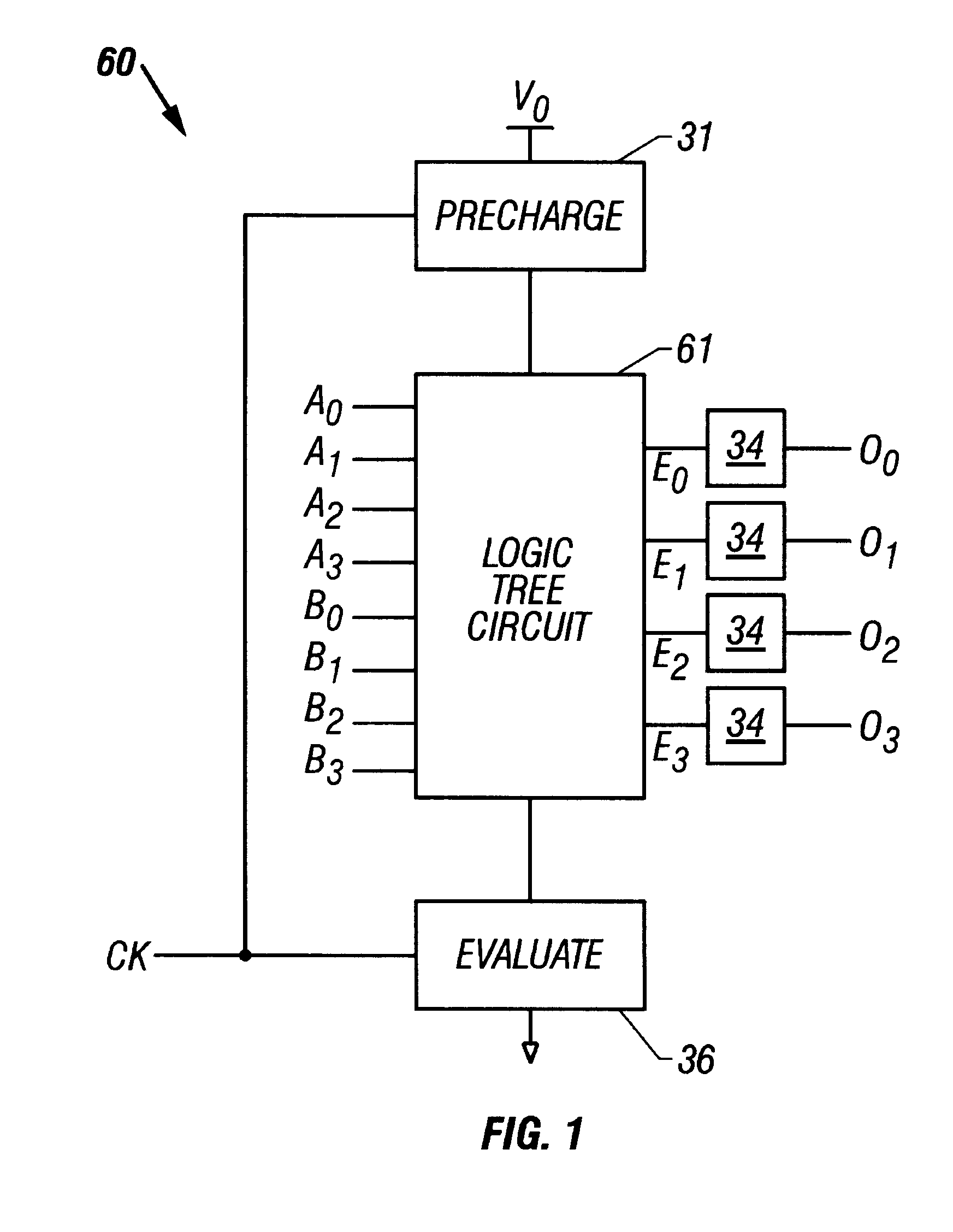Method and apparatus for interruption of carry propagation on partition boundaries
a carry propagation and partition boundary technology, applied in the field of digital computing, can solve the problems of limited usefulness, inability to support 64-bit partitioning saturation, and no additional capacity when operating on a single pair of 8-bit operands
- Summary
- Abstract
- Description
- Claims
- Application Information
AI Technical Summary
Benefits of technology
Problems solved by technology
Method used
Image
Examples
example 1
also illustrates that there will never be a borrow out of the LSD because there is no dit to the right of the LSD. This is the reason that the four's-complement Level One gate 910 illustrated in FIG. 10 and the four's complement subtraction circuits of gates 920, 930, and 940 apply only Assumption II, and not Assumption I, to generate the four's complement pre-correction format.
Keeping the foregoing assumptions and data transfers in mind, we now turn to the present invention's setting of the H, P, and G indicators for subtract operations. In the subtraction operation of the present invention, an H signal relates to the concept of "borrowing." A borrow is the complement of a generate associated with addition. Conceptually, the action of a borrow from dit n is to decrement the value of the difference for dit n in the final level of logic in a subtractor, after all borrows have been propagated--just as a G signal that propagates to a given dit position in addition will increment the va...
example 2
illustrates that, when the value of the MSD of both operands for a signed addition is a decimal value of one, an overflow condition occurs because the result of the addition operation places the value of "1" in the sign bit, whereas the value of the sign bit for both operands is "0". FIG. 23 illustrates that the Level Two preliminary saturation detection gate 970 accurately captures and reports such an overflow condition. FIG. 23 illustrates that, if the "signed" input wire is asserted and the "S2" wire is asserted and the "B1" wire is asserted, then a definite overflow is indicated by assertion of the "OF!" Wire. Restated as a logic equation for signed addition, OF!=S2 AND B1.
FIG. 23 illustrates that the Level Two preliminary saturation detection gate 970 also accurately captures and reports contingent overflow conditions for signed addition. Keeping Example 2 in mind, one can easily see that a contingent overflow for signed addition will occur any time one of the operand MSD's equ...
example 3
illustrates that, when the value of the MSD of both operands is a decimal value of two, an underflow condition occurs because the result of the addition operation places the value of "0" in the sign bit of the preliminary sum whereas the value of the sign bit for both operands is "1". FIG. 23 illustrates that the Level Two preliminary saturation detection gate 970 reports a definite underflow under such conditions. If the "signed" wire is asserted and the "S0" wire is asserted and the "B2" wire is asserted, then gate 970 asserts the "UF!" output wire. Restated as a logic equation for signed addition, UF!=S0 AND B2.
FIG. 23 illustrates that the Level Two preliminary saturation detection gate 970 also accurately captures and reports contingent underflow conditions for signed addition. Keeping Example 3 in mind, one can easily see that a contingent underflow for signed addition will occur any time one of the operand MSD's equals a decimal value of three, and the other equals a decimal v...
PUM
 Login to View More
Login to View More Abstract
Description
Claims
Application Information
 Login to View More
Login to View More - R&D
- Intellectual Property
- Life Sciences
- Materials
- Tech Scout
- Unparalleled Data Quality
- Higher Quality Content
- 60% Fewer Hallucinations
Browse by: Latest US Patents, China's latest patents, Technical Efficacy Thesaurus, Application Domain, Technology Topic, Popular Technical Reports.
© 2025 PatSnap. All rights reserved.Legal|Privacy policy|Modern Slavery Act Transparency Statement|Sitemap|About US| Contact US: help@patsnap.com



